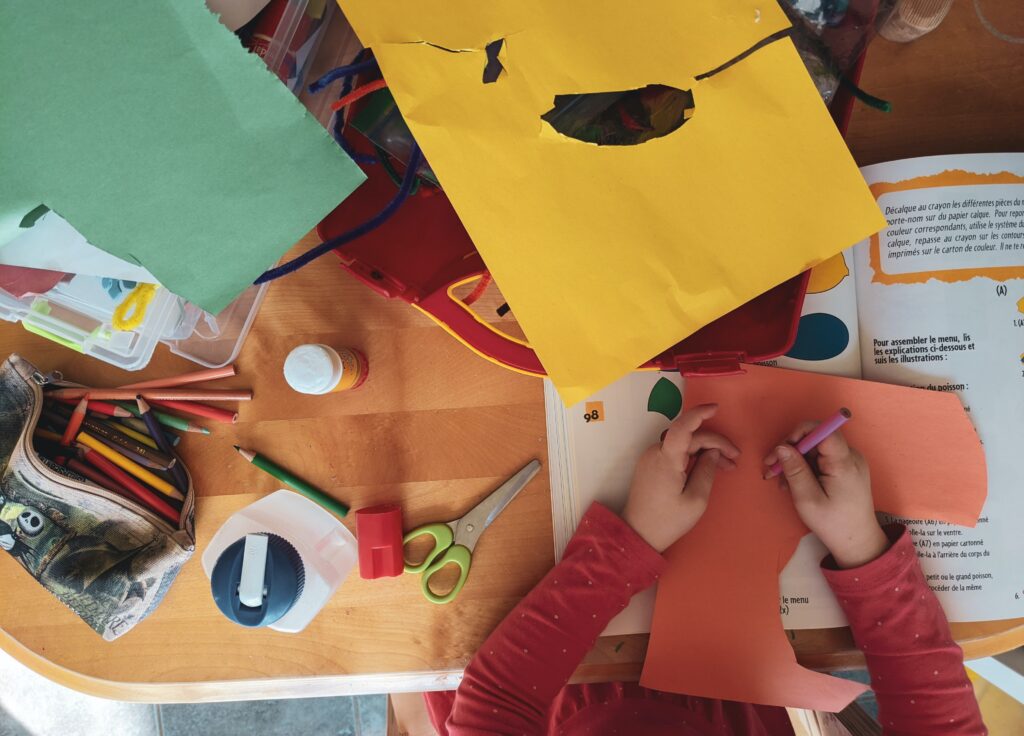Are you interested in learning about your inner child or curious what that even means? Perhaps you have heard the term as it has gained significant public attention. Our team at Awakened Path wants to share with you what the inner child is all about and the impact it has on your mental health. We believe that understanding this concept can help deepen your self-awareness. It can help you process and heal from past trauma or adverse experiences. Continue reading to learn about tools you can implement today to make changes in your life.
What is the inner child?
The term inner child was coined by famous psychologist Carl Jung. In theory, we all have an inner child who has thoughts and feelings about the world, ourselves, and others. Unsafe experiences in our childhood such as but not limited to abuse or neglect, criticism, shame, discouraged emotional expression or pressure impact our perceptions and behaviors. As we make sense of the world through our child lens, our inner child is taking notes and starts to form. The inner child then lives in our unconscious mind, which is responsible for 95% of our behavioral patterns.
Throughout our childhood, it’s inevitable for one or more of our needs not to be met. This is not to place blame on our parents but rather to bring awareness to the internal messages that form in our unconscious mind as a result. Unmet needs and feeling unsafe wound our inner child. As we grow into adulthood we carry the unhealed wounds of our inner child within us. Some of these unhealed wounds may show up in the following ways: difficulties connecting with others, feeling misunderstood, anger, inability to trust others, anxiety, isolation, and other self-destructive behaviors. Deeper and more vulnerable wounds, individuals who experienced childhood trauma may often require support from a mental health therapist. Our trained therapists at Awakened Path are here to guide you and your inner child along this journey.
Our inner child is being reparented by our inner adult. The inner adult is the logical and analytical side of ourselves associated with our brain’s left side. This is where our consciousness lives and the side of us that takes action much like parents caring for their child. The inner adult takes care of the inner child although it is commonly on a subconscious level. In other words, it may be second nature to ensure the inner child’s basic needs are met such as food, housing, clothes, etc. However, the emotional needs of the inner child may get neglected. Children who grew up with emotionally unavailable parents are more likely to act similarly towards their inner child subconsciously. We often parent our inner child the way we were parented, making it important to consciously choose to reparent ourselves.
How is our mental health impacted when our inner child is wounded?
Psychologist Carl Jung has said, “Until you make the unconscious conscious, it will direct your life and you will call it fate.” Can you imagine a child running your life? Essentially, this is what can occur when our inner child is wounded. That inner child is desperate to have their needs met and will work in the ways it knows best causing emotional, physical, and mental turmoil.
Due to the inner child’s instability and skewed perception of the world, the adult creates this reality in their life unconsciously. For example, perhaps the inner child has a fear around emotional connection and trust due to parents not modeling love, respect, or affection. As adults, we are likely to choose partners and/or peers who are not emotionally available. This in turn will validate the inner child’s belief and perception of the world to be true and deem others as unsafe further wounding the inner child along with the inner adult. Having the inner child in the driver’s seat of our lives can be harmful as it can lead to serious mental health conditions including depression. We can feel a sense of emptiness, hopelessness, and disconnection from ourselves and others.
Going back in time to change our past is impossible but healing from our past is possible. We understand the courage it takes to walk down the path of healing. That walk doesn’t have to be in isolation. Therapy is a powerful tool that can empower you to walk down this path with ease. Awakened Path is here to help. Below are some tools that you can start to implement today to get one step closer to inner healing.
Inner child healing exercises
1. Write a letter
One healthy inner child visualization you can try is to address the letter to your inner child and share some of your perspectives and understandings of your childhood. These letters can some clarity to your inner child while also offering words of encouragement and support. Ensure you are in a safe place and a calm state of mind as you are writing this letter. Don’t know where to start? Here are some prompts that can support your letter writing:
- Reflect on any past hurts or resentments you may be holding onto from your childhood. Explore the possibility of forgiving those who may have hurt you and releasing any emotional burdens.
- Express gratitude for the resilience and strength of your inner child. Write about the qualities and characteristics that make your inner child special.
- Write about the progress you’ve made in your life. Celebrate your growth, no matter how small, and acknowledge your resilience.
- Explore any unmet emotional or psychological needs you had as a child. How have these needs influenced your adult life? How can you address them now?
- Reconnect with your inner child by addressing them lovingly and asking how they are feeling. Let your inner child respond, expressing their thoughts and emotions.
- Discuss a specific joyful or happy memory from your childhood. Describe the details, the people involved, and how it made you feel.
- Reflect on a challenging or painful memory from your childhood. Describe the situation, your emotions, and any insights you have gained since then. Offer comfort and understanding to your inner child.
- Imagine your adult self comforting and reassuring your inner child. Write down the comforting words you would say to provide support and love.
Affirmations such as “You are enough, You deserve to have a voice, You are loved unconditionally,” can be also reassuring for your inner child. As you end your letter, reassure your inner child that you will continue to connect with them.
2. Engage in play
Children learn best through play. Famous playwright George Bernard Shaw is quoted saying, “We don’t stop playing because we grow old, we grow old because we stop playing.” The vast benefits of including play in your daily life include:
- Emotional Expression: Play allows you to express and release pent-up emotions from your past. Just like children, adults can benefit from activities that help them express joy, sadness, anger, and other emotions in a healthy way.
- Self-Exploration: Play provides an opportunity for self-exploration and self-discovery. Through play, you can gain insight into your inner child’s needs, desires, and fears. This self-awareness is a crucial step in the healing process.
- Stress Reduction: Play can reduce stress and anxiety, creating a sense of relaxation and well-being. When you engage in playful activities, you activate the brain’s reward system, releasing feel-good neurotransmitters like dopamine.
- Reparenting: Play can be a form of self-reparenting, where you become the nurturing and loving caregiver your inner child needs. Through play, you can offer yourself the care and validation you may have missed as a child.
- Breaking Patterns: Play can help break unhealthy patterns and behaviors that may have originated in childhood. It provides an opportunity to practice new, more adaptive ways of relating to yourself and others.
- Connecting with Others: Play can be a social activity, allowing you to connect with others who share similar interests. Building healthy relationships with others can also contribute to inner child healing by providing support and understanding.
- Resilience and Coping: Play can improve resilience and coping skills. It reminds you that you have the capacity to overcome challenges, adapt to new situations, and find joy even in difficult times.

Intentionally add more play into your life. Think about what you enjoyed doing in your childhood and make time to incorporate that into your life. When engaging in play for inner child healing, it’s essential to choose activities that resonate with you personally. What feels playful and healing for one person may be different for another. Whether it’s engaging in hobbies, sports, dancing, coloring, painting, crafts, or simply spending time in nature, the key is to approach these activities with an open heart and a willingness to connect with your inner child’s needs and desires.
If you’re trying to think of ways to build playful activities into your schedule, consider signing up for a class or joining a recreational sports league.
3. Practice a reparenting visualization
A reparenting visualization is a therapeutic exercise that involves visualizing and engaging in a nurturing, supportive, and loving relationship with your inner child. The goal of this exercise is to provide yourself with the care and emotional support that you may not have received during your childhood. It’s a form of inner child visualization that works as self-therapy for healing emotional wounds and fostering self-compassion.
Here’s how to do a reparenting visualization:
1. Find a Quiet Space: Choose a quiet and comfortable place where you won’t be disturbed. You may want to sit or lie down in a relaxed position.
2. Deep Breathing: Start by taking a few deep breaths to relax your body and mind. Close your eyes if you feel comfortable doing so.
3. Visualize Your Inner Child: Begin to imagine your inner child—a younger version of yourself at a specific age when you may have experienced emotional wounds or unmet needs. Visualize this child standing in front of you.
4. Nurturing Presence: In your mind’s eye, see yourself as the nurturing and loving adult caregiver. You can visualize your present self or even create an idealized version of yourself specifically for this role.
5. Engage in Dialogue: Begin a dialogue with your inner child. Imagine yourself speaking comforting and supportive words to your inner child. Use phrases like:
“I love you just as you are.”
“You are safe and protected.”
“You are worthy of love and happiness.”
“I’m here to listen and understand.”
6. Physical Comfort: In your visualization, offer physical comfort to your inner child. This can include giving hugs, holding hands, or providing any form of physical contact that makes your inner child feel safe and loved.
7. Address Needs: Ask your inner child if they need or want to share anything with you. Encourage them to express their feelings, fears, and desires.
8. Assure Continual Support: Promise your inner child that you will always be there for them, offering love, support, and guidance whenever they need it.
9. Reparenting Visualization: Continue the visualization for as long as it feels comfortable and beneficial. You can engage in this exercise regularly to deepen your connection with your inner child and provide ongoing support.
10. Closure: When you’re ready to conclude the visualization, express gratitude to your inner child for allowing you to connect with them. Assure them that you will continue this loving and supportive relationship.
Reparenting visualizations can be a profound way to heal emotional wounds, build self-compassion, and provide the care and validation you may not have received in the past. This is a personal and therapeutic exercise; you can customize it to meet your specific needs and preferences. Over time, it can contribute to a stronger sense of self-worth and emotional well-being.

Remember to have self-compassion
When you work on inner child healing exercises, showing yourself compassion is key. Displaying unconditional love and nurturance for your inner child can catapult your journey towards self-love. You can do this through affirmations, positive internal dialogue between you and your inner child, and replacing criticism and judgment with coaching.
If you are looking for support in your journey to inner child healing, our team of experienced therapists at Awakened Path Counseling is ready to help. Contact us to find out more about our holistic approach.


